Save the Cheetahs
African Parks is creating safe havens for cheetahs, increasing their range and bringing them back to parks and countries where they have been locally extinct for decades. Learn more about our work and what you can do to help.
Cheetah Conservation
Cheetahs have been eradicated from 90 percent of their historical range in Africa and are listed as Vulnerable by the IUCN as fewer than 6,700 remain in the wild. While numbers have plummeted due to shrinking habitats and growing anthropogenic pressures, protected areas provide safe spaces that are critical to enabling population growth and range expansion, and to securing a future for the species on the continent.
African Parks has heeded the call to safeguard and protect Africa’s cheetahs through effective park protection at a landscape level, and species-specific interventions including reintroductions and translocations, monitoring and research. Cheetahs are currently found in nine of the 19 parks under our management (Majete and Liwonde in Malawi, Liuwa Plain and Bangweulu in Zambia, Matusadona in Zimbabwe, Iona in Angola, Zakouma in Chad, Pendjari and W in Benin) and were reintroduced to three of those parks (Majete, Liwonde and Bangweulu) after decades of poaching had completely eliminated them.
“Large predators like cheetahs play pivotal roles in African ecosystems, but they are in troubling decline across the continent”
How We're Saving the Cheetahs
Creating Safe Havens for Cheetahs
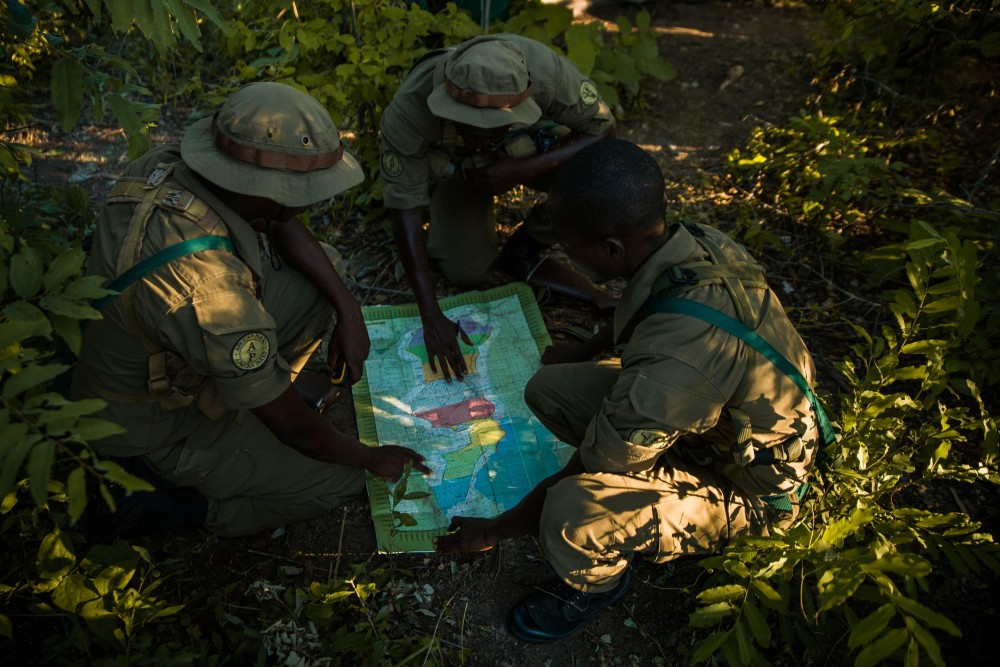 © Naude Heunis
© Naude HeunisTo protect wildlife, we have created Law Enforcement units in each of the parks under our management which are composed of highly trained and equipped rangers operating on foot, horseback, boats, in vehicles, helicopters and airplanes. Some teams even have K9 units. The overall goal of these teams is to uphold the country’s wildlife laws, safeguard wildlife populations within parks, keep illegal activity out of the parks like poaching, and provide safe places for the surrounding human communities.
Reintroducing Cheetahs to Historic Habitats
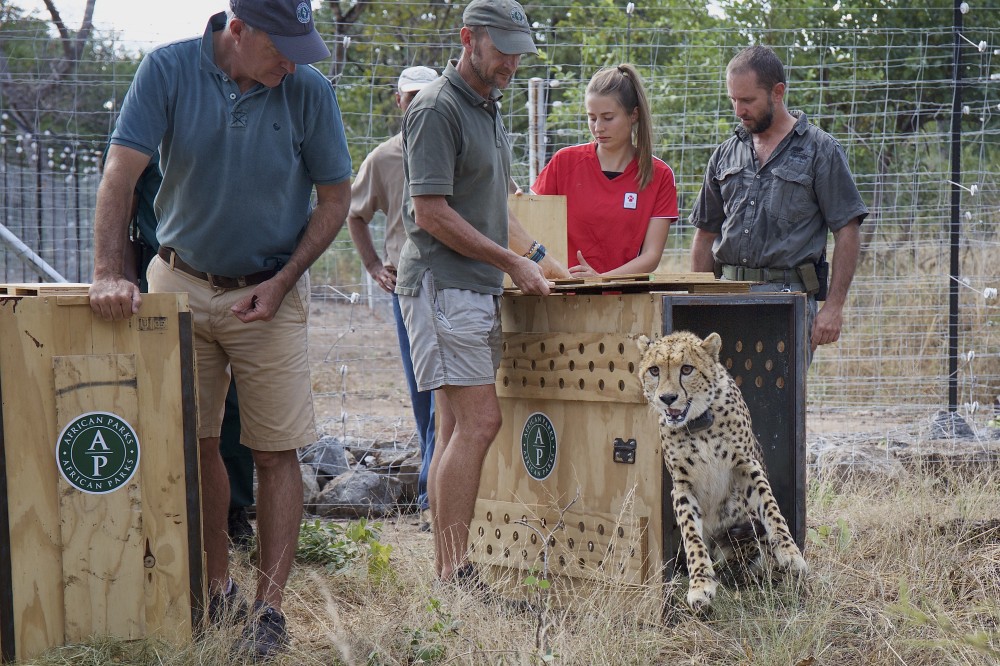 © Frank Wietzer
© Frank WietzerOnce a park is secure, we assess the viability of bringing key species back that have been hunted to local extinction. We reintroduced cheetahs to Liwonde in 2017, Majete in 2019, and Bangweulu in 2020. Considering that cheetah populations in protected areas have grown while those outside of well protected areas have plummeted, increasing the population range of these iconic cats and reintroducing them to well-protected habitats is critical to their long-term conservation.
Investing in Local Communities
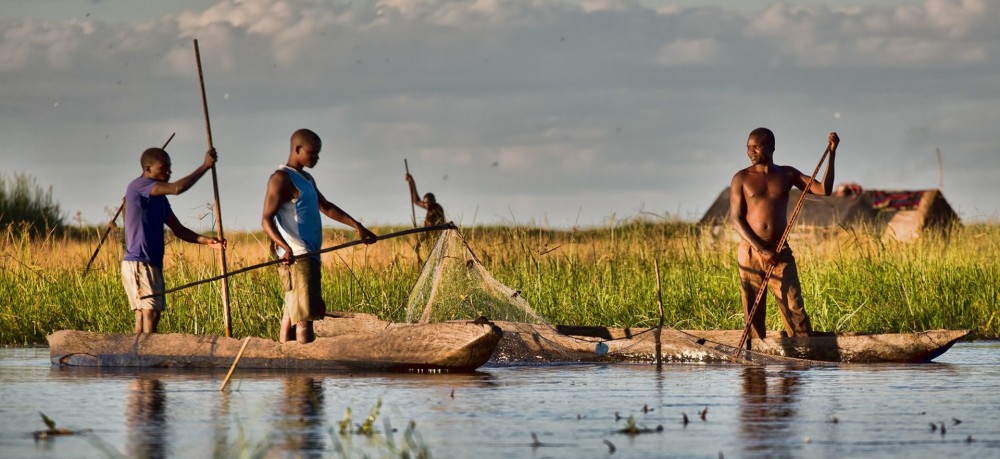
African Parks employs local community members, invests in education, provides health care and attracts tourism to parks which benefits local communities. In 2020 alone we created 3,219 jobs, generated $3.07M in tourism revenue and received over 43,000 tourists in the 19 parks under our management. Further, we built and supported 105 schools and provided more than 108,000 people with access to healthcare. The future of protected areas hinges on whether the people who live in and around these areas value them, and to truly value them they must benefit from them.
Where to see Cheetahs
-
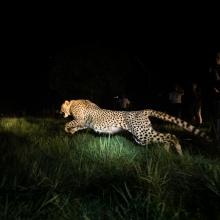 Bangweulu WetlandsBangweulu Wetlands is a community-owned protected wetland in north-eastern Zambia that is home to 50,000 people who retain the right to sustainably harvest its natural resources and depend on it for survival. Before the Zambian Government invited African Parks to manage Bangweulu in 2008, years of poaching had eliminated the area’s large mammals including lion, elephants and cheetah. In 2020 a small founding group of cheetahs was translocated to Bangweulu – the first of their species to return to the wetland in almost a century.
Bangweulu WetlandsBangweulu Wetlands is a community-owned protected wetland in north-eastern Zambia that is home to 50,000 people who retain the right to sustainably harvest its natural resources and depend on it for survival. Before the Zambian Government invited African Parks to manage Bangweulu in 2008, years of poaching had eliminated the area’s large mammals including lion, elephants and cheetah. In 2020 a small founding group of cheetahs was translocated to Bangweulu – the first of their species to return to the wetland in almost a century. -
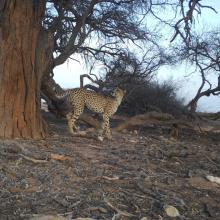 Iona National ParkIona National Park is situated in the southwest corner of Angola and constitutes the northern tip of the Namib in a section known as the Moçâmedes Desert, the oldest desert in the world. Iona is contiguous with Skeleton Coast National Park in Namibia, which is also contiguous with Namib-Naukluft National Park, creating one of the largest trans-frontier conservation area’s (TFCA) in the world. Large carnivore species include cheetah, leopard, and brown hyaena but these are present in low numbers and are rarely seen.
Iona National ParkIona National Park is situated in the southwest corner of Angola and constitutes the northern tip of the Namib in a section known as the Moçâmedes Desert, the oldest desert in the world. Iona is contiguous with Skeleton Coast National Park in Namibia, which is also contiguous with Namib-Naukluft National Park, creating one of the largest trans-frontier conservation area’s (TFCA) in the world. Large carnivore species include cheetah, leopard, and brown hyaena but these are present in low numbers and are rarely seen. -
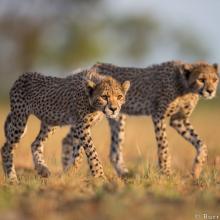 Liuwa PlainLiuwa Plain National Park in Zambia has one of the oldest conservation histories in Africa, dating back to the 19th century where the King of Barotseland, Lubosi Lewanika, appointed his people to be the custodians of the park and its wildlife. In 2019, two new groups of cheetahs were found, bringing the total population up to around 18 to 20 animals. The lion population of Liuwa, once reduced to one lioness, is slowly growing as a result of reintroductions and the birth of cubs.
Liuwa PlainLiuwa Plain National Park in Zambia has one of the oldest conservation histories in Africa, dating back to the 19th century where the King of Barotseland, Lubosi Lewanika, appointed his people to be the custodians of the park and its wildlife. In 2019, two new groups of cheetahs were found, bringing the total population up to around 18 to 20 animals. The lion population of Liuwa, once reduced to one lioness, is slowly growing as a result of reintroductions and the birth of cubs. -
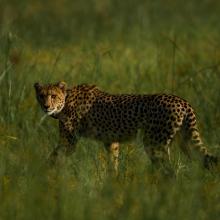 Liwonde National ParkIn 2017, we began to re-establish Liwonde’s predator population and reintroduced cheetahs, bringing the species back to the park after 100 years. Today, conflict and poaching at are an all-time low, and tourism is on the rise. Visitors come to see the parks elephants, as well as the newly introduced lions and cheetahs, and the growing rhino population.
Liwonde National ParkIn 2017, we began to re-establish Liwonde’s predator population and reintroduced cheetahs, bringing the species back to the park after 100 years. Today, conflict and poaching at are an all-time low, and tourism is on the rise. Visitors come to see the parks elephants, as well as the newly introduced lions and cheetahs, and the growing rhino population. -
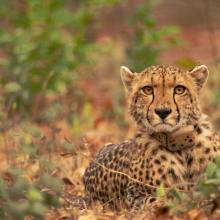 Majete Wildlife ReserveMajete Wildlife Reserve had little to no wildlife 18 years ago. However, after a series of reintroductions that involved over 2,900 animals from 16 different species including elephants, rhinos, lions, leopards, giraffe and more recently cheetahs, the reserve is thriving and supports countless wildlife, and community projects around its periphery.
Majete Wildlife ReserveMajete Wildlife Reserve had little to no wildlife 18 years ago. However, after a series of reintroductions that involved over 2,900 animals from 16 different species including elephants, rhinos, lions, leopards, giraffe and more recently cheetahs, the reserve is thriving and supports countless wildlife, and community projects around its periphery. -
Pendjari National ParkPendjari National Park is situated in Benin and is home to the largest remaining intact ecosystem in all of West Africa and the regions last viable populations of elephants, lions and cheetahs. In 2017, African Parks signed a 10-year agreement to manage the park, ensuring protection from poachers and habitat loss. The park is poised to be an exceptional wildlife destination, and delivers benefits of security, employment, and sustainable livelihoods for the nearly 40,000 people who live around its boundary.
-
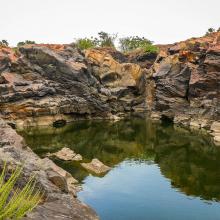 W National ParkW National Park is a transboundary protected area and UNESCO World Heritage Site covering three countries: Benin, Burkina Faso, and Niger. The W Benin National Park and the greater Complex are deeply important for the conservation of large African fauna in the region. The cheetah, lion, and korrigum make up the last remaining viable populations in West Africa.
W National ParkW National Park is a transboundary protected area and UNESCO World Heritage Site covering three countries: Benin, Burkina Faso, and Niger. The W Benin National Park and the greater Complex are deeply important for the conservation of large African fauna in the region. The cheetah, lion, and korrigum make up the last remaining viable populations in West Africa. -
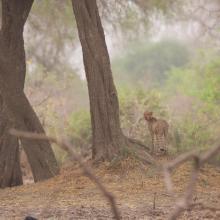 Zakouma National ParkZakouma has undergone a complete transformation in the past nine years. Poaching has been essentially eliminated, the elephant population is on the rise for the first time in decades, the park has become one of the most globally significant migratory bird habitats, and lions, leopards, giraffe, and cheetahs are all on the rise.
Zakouma National ParkZakouma has undergone a complete transformation in the past nine years. Poaching has been essentially eliminated, the elephant population is on the rise for the first time in decades, the park has become one of the most globally significant migratory bird habitats, and lions, leopards, giraffe, and cheetahs are all on the rise.